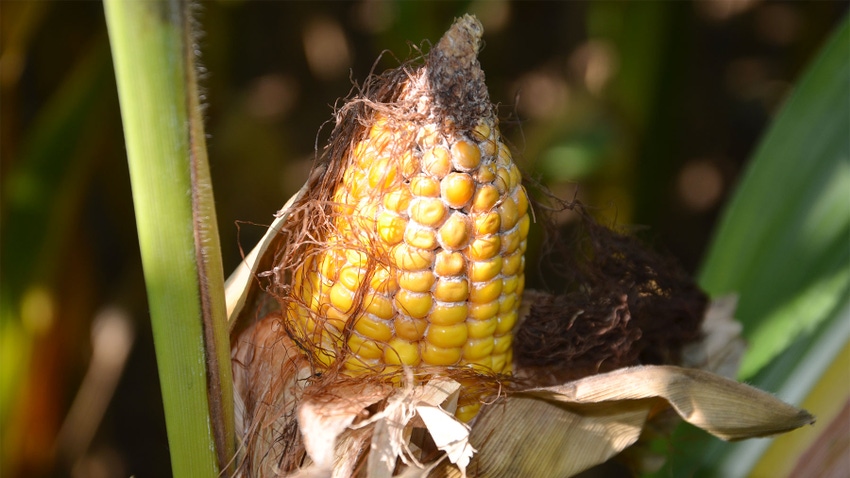
The meeting held in a farm shop in north-central Indiana recently centered on seeking higher crop yields through fertilizer additives and biologicals. One farmer was interested in more than better yields. He wants to combat mycotoxin issues.
Why? He operates a farrow-to-finish swine operation. One of his biggest headaches now is mycotoxins, both in his own corn and in corn he buys from other farmers. “Finishing pigs go off feed,” he said. “It may even affect breeding efficiency.”
Once he spoke up, others chimed in. While he was the only hog producer, others reported that most elevators and ethanol plants test for one or more mycotoxins. If levels are above a set limit, the load can be rejected.
Why more mycotoxin issues?
Those farmers agreed that mycotoxins used to be an issue that cropped up occasionally. Now, they seem to pop up every year in their area. Disease specialists confirm that an area in the eastern Corn Belt — including central and northern Indiana, much of Ohio and all of Michigan — seems to encounter this issue more frequently than areas farther west in the Corn Belt.
Manni Singh, Extension specialist in Michigan State University’s Department of Plant, Soil and Microbial Sciences, notes that the climate in these areas in the eastern Corn Belt favors ear rots and molds in corn. Ear rots and molds produce various mycotoxins.
While aflatoxin gets lots of press, it is more prevalent in dry areas and dry seasons. Many other mycotoxins besides aflatoxin can plague the eastern Corn Belt. One that gets particular attention is zearalenone, which can be produced by gibberella and fusarium ear rots. It causes pigs to refuse feed and can contribute to other ailments.
More research needed
How can farmers experiencing problems with mycotoxins limit their headaches? There is no single answer. However, Singh and colleagues in Michigan have documented the presence and severity of mycotoxins in both corn and corn silage though research trials going back nearly a decade. They have also attempted to find solutions through their work.
Singh recommends a list of management suggestions for minimizing mycotoxin problems, beginning with hybrid selection. Planting hybrids with top disease and insect resistance should reduce plant stress, which reduces odds for severe ear rot and ear mold infections. However, just picking the most disease-resistant hybrid won’t guarantee that problems with mycotoxins are over. It’s not that simple, Singh says.
In Indiana, Darcy Telenko, Extension disease specialist of field crops at Purdue, and her team are doing excellent work attempting to unlock answers about tar spot, the newest foliar disease of corn in the Midwest. Tar spot can take a bite out of yields and set up plants for ear rots and molds once plants are stressed. However, focusing on mycotoxins specifically with the same type of intensity would likely take more research funding.
It appears Hoosier farmers in general, not just swine producers, would benefit from an investment in more research on mycotoxins and how to limit them. Let’s hope there is a way to secure funds for this worthwhile research.
Read more about:
MycotoxinAbout the Author(s)
You May Also Like




